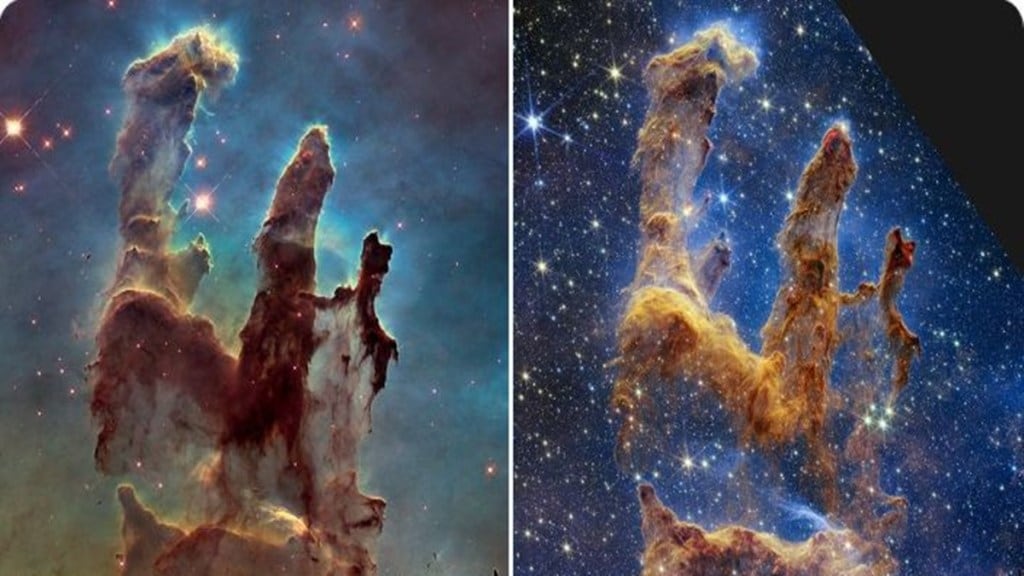The National Aeronautics and Space Administration’s (NASA) James Webb Space Telescope has captured a lush, highly detailed image of the iconic Pillars of Creation-the towering structures of dust and gas within the Eagle Nebula. It is one of the places in the galaxy where new stars take birth within dense clouds of gas and dust. These three-dimensional pillars look like majestic rock formations but are far more porous. These columns are made up of cool interstellar dust and gas.
What better way to mark #NewFriendsDay than with this new view? One of Hubble’s most iconic shots now has a complementary companion from our friend @NASAWebb! This star-forming region is known as the Pillars of Creation, and shows a small region of the Eagle Nebula,” tweeted NASAHubble on Twitter.
ALSO READ Solar Eclipse 2022: Check Surya Grahan date and time and where to watch
“Webb’s new view of the Pillars of Creation, which were first made famous when imaged by NASA’s Hubble Space Telescope in 1995, will help researchers revamp their models of star formation by identifying far more precise counts of newly formed stars, along with the quantities of gas and dust in the region,” said NASA. With time, they will begin to build a more precise understanding of how stars form and burst out of these dusty clouds over millions of years, it added.
The newly formed stars are the scene-stealers in this image from Webb’s Near-Infrared Camera (NIRCam). These are the glowing red orbs that typically have diffraction spikes and lie outside one of the dusty pillars.
About Eagle Nebula
The Eagle Nebula is also known as the Star Queen Nebula. It is an immature open cluster of stars in the constellation Serpens. It was discovered by Jean-Philippe de Cheseaux in 1745–46. Both the “Eagle” and the “Star Queen” refer to visual impressions of the dark silhouette near the center of the nebula and this very area is famously known as the “Pillars of Creation”! The Nebula lies in the Sagittarius Arm of the Milky Way.


